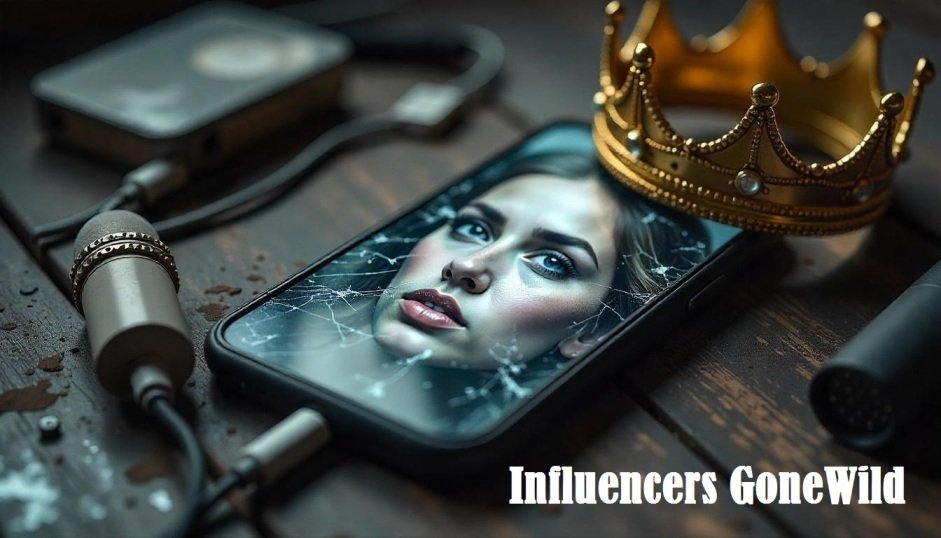
influencers-gonewild
In today’s digital age, influencers dominate social media platforms with their curated lifestyles, brand promotions, and viral content. However, there’s a growing phenomenon sparking conversations, controversy, and curiosity alike — influencers-gonewild. This term doesn’t simply point to risqué behavior but rather to the larger trend of influencers pushing boundaries, often for clout, money, or shock value. In this article, we dive deep into the influencers-gonewild trend, what fuels it, its implications, and how audiences respond.
The Rise of Influencer Culture
Before understanding the influencers-gonewild phenomenon, it’s essential to recognize how influencer culture evolved. Over the past decade, influencers have become powerful digital figures. Whether on Instagram, TikTok, YouTube, or OnlyFans, they impact everything from consumer purchases to public opinion. With fame comes pressure — and often, that pressure leads to dramatic or extreme behavior.
What Does “Influencers GoneWild” Really Mean?
Influencers-gonewild refers to situations where social media personalities exhibit extreme, controversial, or inappropriate actions that stir public reactions. This can include anything from outrageous stunts, explicit content, public meltdowns, to violating laws or social norms. It represents a blend of fame, impulsiveness, and a hunger for viral attention.

In many cases, influencers-gonewild moments are premeditated — a way to boost views, likes, and followers. But other times, these moments are unscripted, offering an unfiltered glimpse into an influencer’s real life, often clashing with their carefully curated online personas.
Examples of Influencers GoneWild
There are numerous documented incidents where influencers-gonewild stories have shocked the internet. Take, for example, travel influencers who ignore safety rules for a perfect selfie, or fitness influencers caught promoting harmful or misleading health products. Some influencers have even been arrested for filming pranks that went too far, all under the banner of gaining views.
One notorious example involved an influencer who vandalized public property during a “social experiment,” labeling it as performance art. The backlash was swift, with the influencers-gonewild label trending across social platforms.
Another instance includes OnlyFans creators who pushed the boundaries of public decency laws for content that would go viral. These cases demonstrate how the pursuit of internet fame under the influencers-gonewild narrative can sometimes lead to real-world consequences.
The Psychology Behind Going Wild
Why do influencers go to such extremes? The answer lies in the algorithm-driven nature of social media. Platforms reward engagement — and nothing drives engagement like shock and awe. The influencers-gonewild phenomenon is, in many ways, a byproduct of attention economics. Influencers know that pushing boundaries often yields more likes, shares, and ultimately, revenue.
Additionally, there is a psychological aspect to being constantly in the public eye. The need to remain relevant can be overwhelming. When standard content fails to perform, many turn to the influencers-gonewild playbook to reignite interest.
Monetization and Morality
An important component of influencers-gonewild is monetization. Outrage equals clicks, and clicks equal cash. Some influencers deliberately create chaos, banking on the fact that any publicity — even bad — can be profitable. Sponsored deals, subscription platforms like Patreon or OnlyFans, and YouTube ad revenue all benefit from viral content, even if it stems from controversy.
But with monetization comes ethical concerns. At what point does entertainment cross into irresponsibility? The influencers-gonewild trend has raised serious questions about influencer accountability. Should creators be penalized for spreading harmful content? Are platforms doing enough to regulate extreme behavior?
The Role of Audience and Cancel Culture
Audiences play a key role in the influencers-gonewild cycle. Viewers often reward shocking content with likes and comments, creating a loop that encourages further outlandish behavior. But the same audience can turn quickly. Cancel culture is the double-edged sword of influencer life. Today’s viral sensation can be tomorrow’s cautionary tale.
When influencers-gonewild behavior crosses a certain threshold, public backlash ensues. Hashtags trend, sponsors pull out, and apologies are issued. Yet, paradoxically, many influencers rebound stronger than ever, feeding off controversy to expand their reach. It seems that for some, going wild is a calculated risk — one that often pays off.
Influencers GoneWild and the Law
Several influencers-gonewild incidents have drawn legal scrutiny. Whether it’s trespassing for content, defamation in videos, or violating platform guidelines, the law is beginning to catch up. Countries like the U.S., U.K., and Australia have seen increased calls for legal regulation of influencer behavior.
One infamous influencers-gonewild case involved a prank video that resulted in a car crash. While the influencer called it “just content,” the courts didn’t agree. Jail time and lawsuits followed, sending a clear message: there are limits to what one can do for clout.
The Future of Influencers GoneWild
Where is this trend heading? While platforms like TikTok and Instagram have tightened content moderation policies, the rise of decentralized platforms and the lure of unregulated spaces mean influencers-gonewild may continue to thrive.
However, awareness is growing. Brands are becoming more selective about whom they sponsor. Viewers are more critical of manipulative or offensive content. As the line between entertainment and exploitation blurs, influencers may find that the influencers-gonewild path is not sustainable long-term.
How Can Influencers Avoid Going Too Far?
The solution doesn’t lie in censorship, but in conscious content creation. Influencers can gain traction without resorting to extreme antics. Authenticity, storytelling, and creativity still matter. Those who avoid the influencers-gonewild trap tend to have longer, more respected careers.
Collaborations with mental health advocates, transparency about the pressures of social media, and a shift towards educational or meaningful content are all ways creators can rise above the chaos.
Conclusion
The influencers-gonewild phenomenon is both a cautionary tale and a mirror reflecting the state of online fame. It’s a world where algorithms reward shock, where controversy is currency, and where boundaries are tested daily. But as audiences grow more discerning and the consequences become clearer, one can hope for a shift toward more responsible, value-driven content creation.
Until then, influencers-gonewild remains a defining chapter in the ever-evolving story of internet culture — one that will continue to spark headlines, debates, and lessons for both creators and consumers.